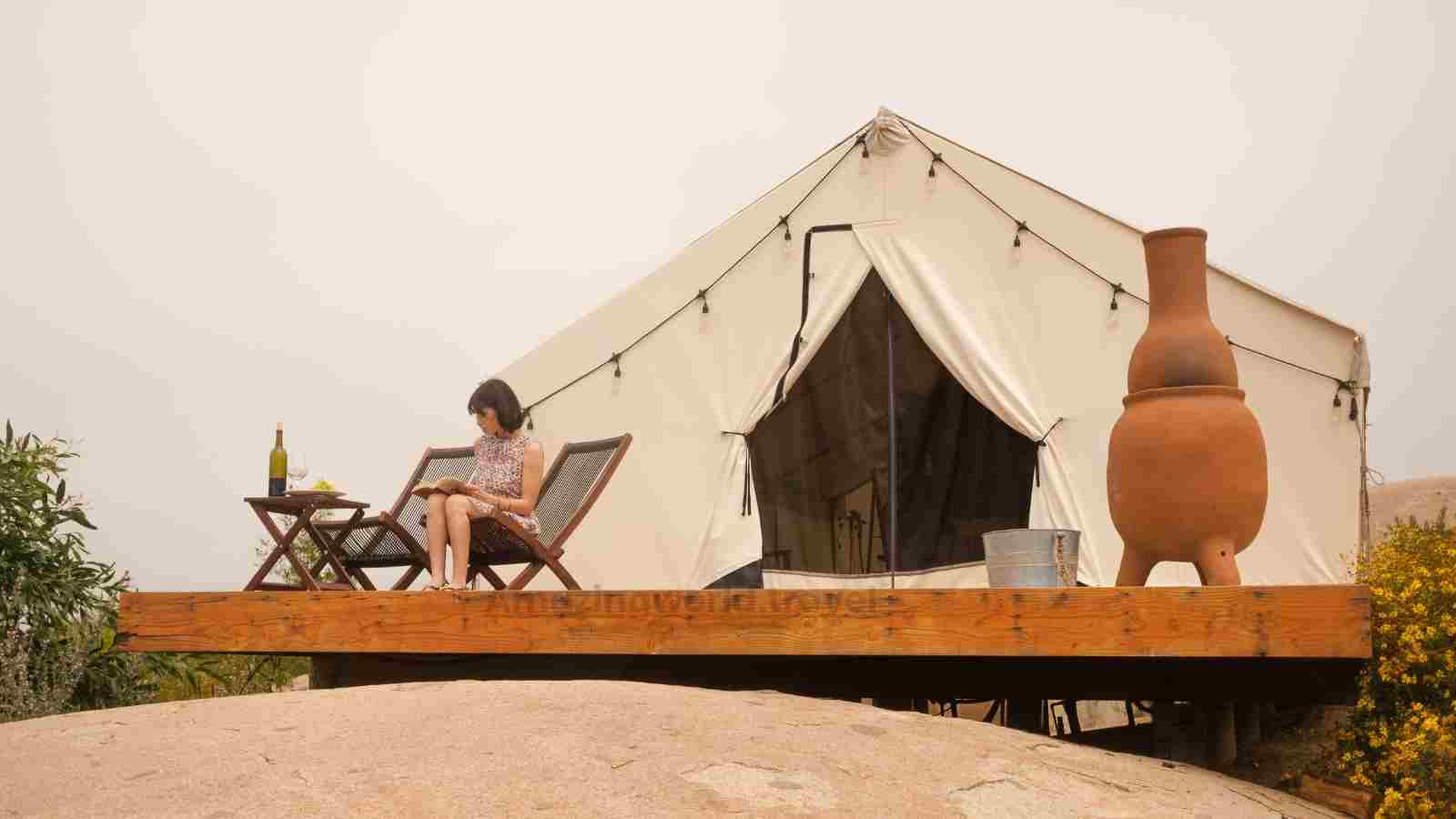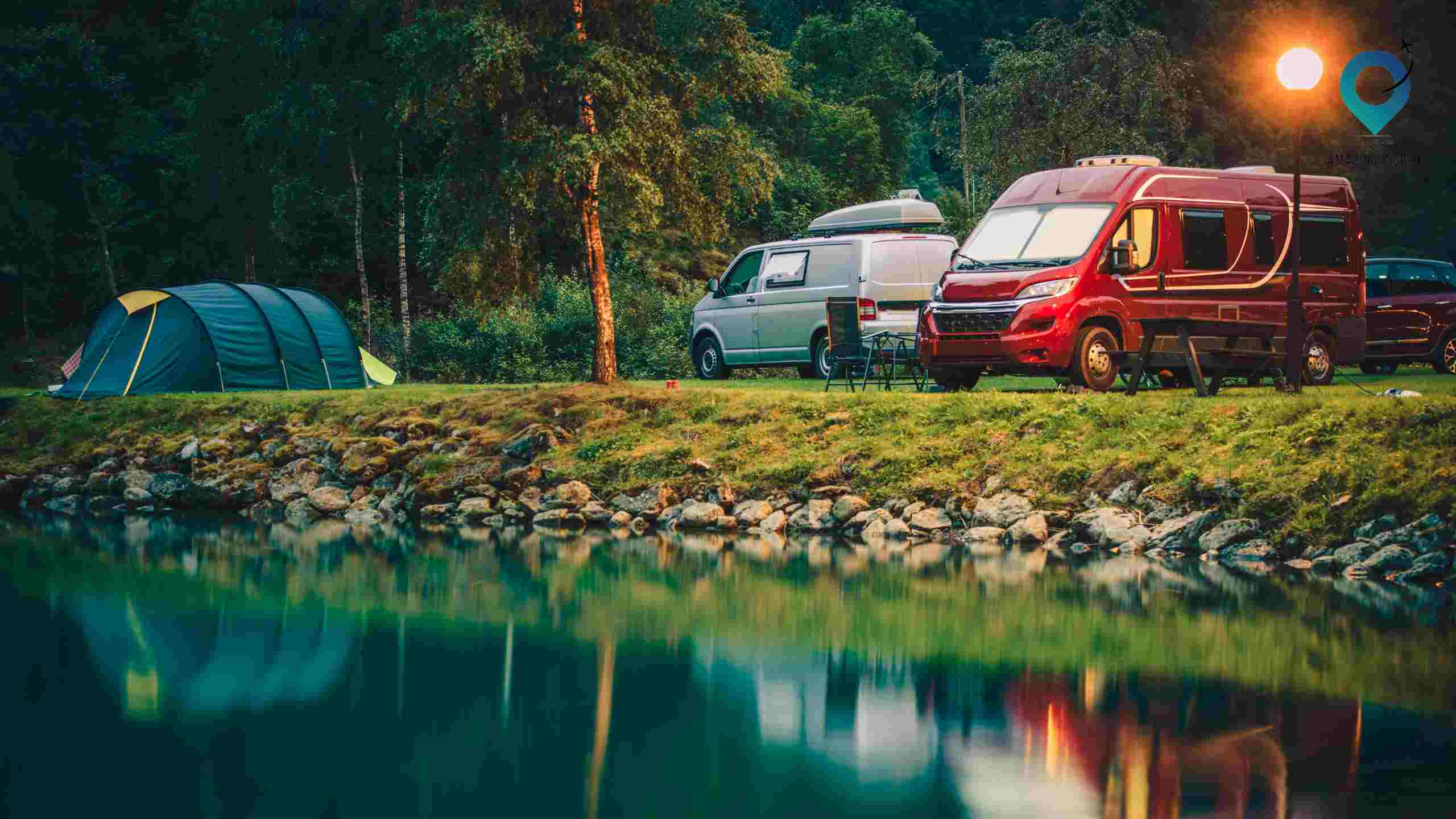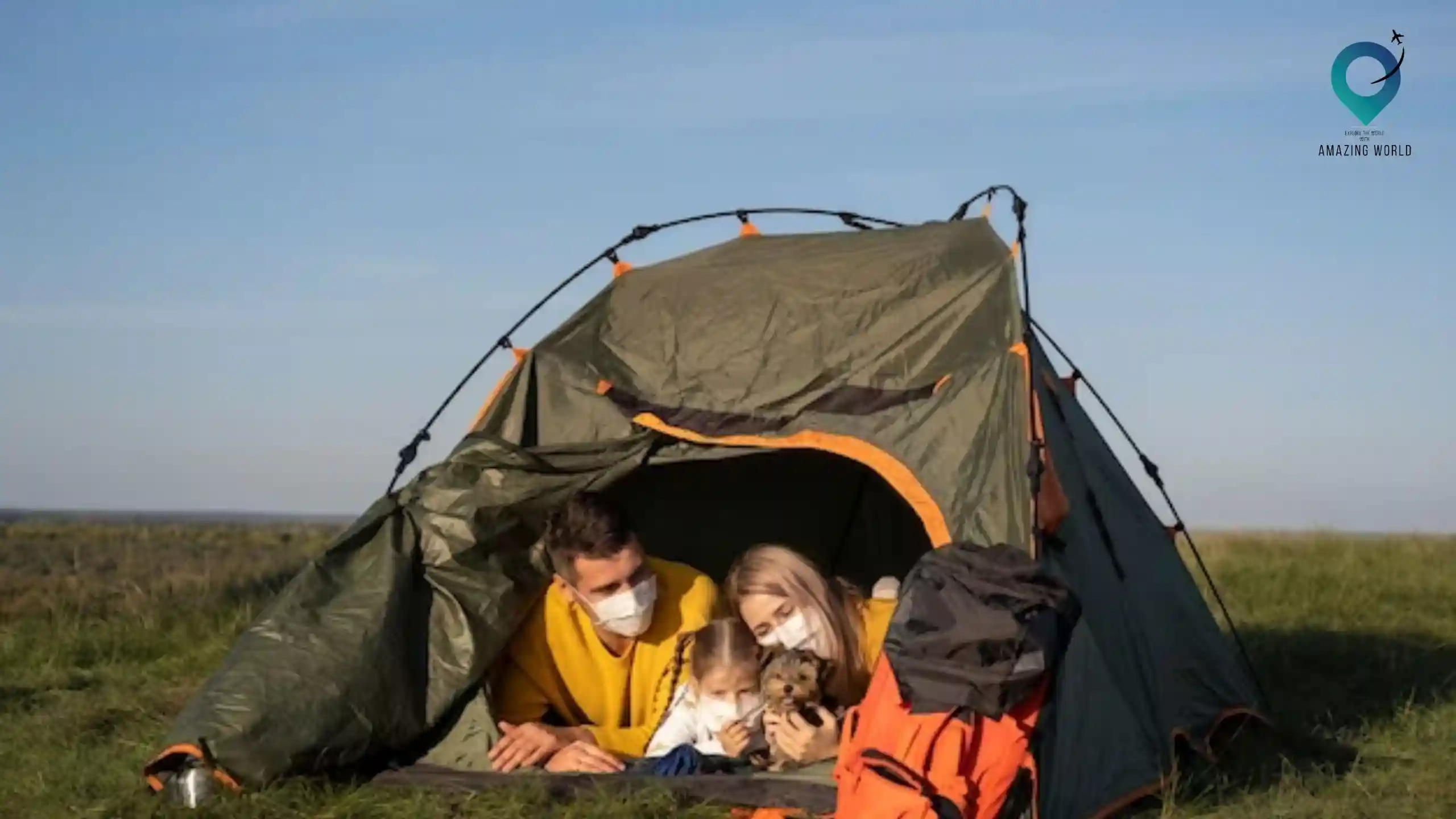Glamping Safety Tips: Stay Secure and Enjoy Your Luxury Camping Experience
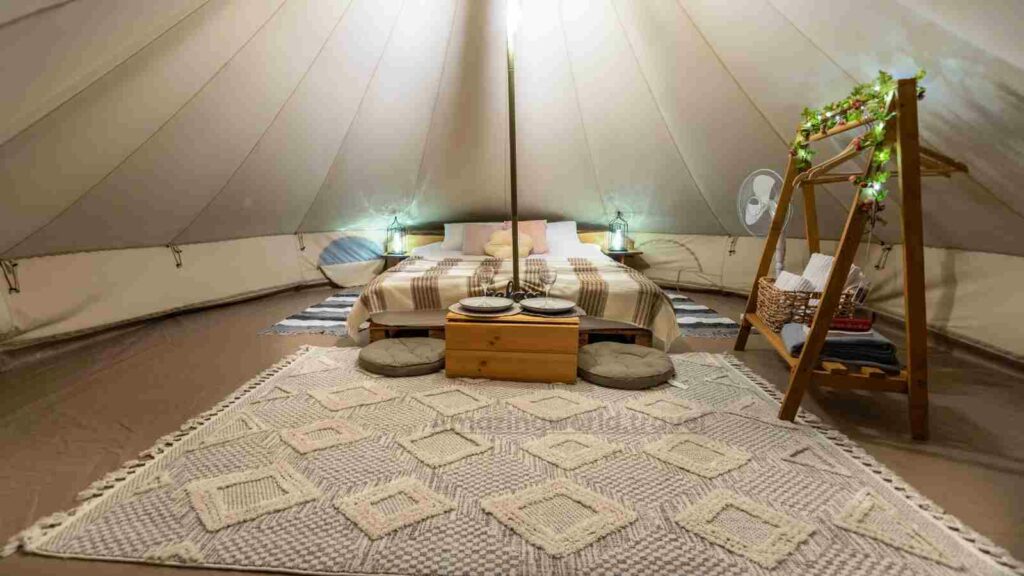
Are you planning an upcoming glamping adventure, eager to immerse yourself in nature’s beauty while enjoying the comforts of luxury camping? As you embark on this exciting journey, it’s crucial to keep safety at the forefront of your mind.
In this comprehensive guide, we’ll explore essential glamping safety tips that will help you stay secure and fully relish your luxury camping experience. From choosing the perfect glamping location to mastering campfire safety and respecting local culture, we’ve got you covered. So, let’s delve into the world of glamping safety, ensuring that your adventure is not only glamorous but also worry-free.
Choosing a Safe Glamping Location
Before embarking on your glamping adventure, it’s essential to thoroughly research and select the right location. Here are key factors to consider:
Location Factors: When choosing a glamping destination, it’s vital to take into account various geographical and environmental factors:
- Climate: Research the typical weather conditions for the area during your planned stay. Knowing what to expect in terms of temperature, precipitation, and seasonal changes will help you pack appropriate clothing and gear.
- Terrain: Consider the terrain of the glamping site. Is it in a forest, near a beach, or in the mountains? Different terrains come with specific safety considerations, such as the risk of falling branches, wildlife encounters, or rockslides.
- Proximity to Water Bodies: If your chosen glamping location is near lakes, rivers, or oceans, be aware of water safety. Familiarize yourself with potential risks like strong currents or tides, and ensure you and your fellow glampers know how to swim if necessary.
Understanding these location factors will enable you to prepare adequately for your glamping trip, ensuring you have the right gear and knowledge to stay safe in your chosen environment.
Safety Certifications
To enhance your safety, look for glamping sites that have safety certifications or positive reviews from previous guests. These indicators suggest that the site prioritizes the well-being of its visitors:
- Certifications: Some glamping sites may have safety certifications from relevant authorities or organizations. These certifications can vouch for the site’s compliance with safety standards and regulations.
- Reviews: Reading reviews from previous guests can provide valuable insights into the safety and overall experience at a particular glamping site. Look for reviews that mention safety measures, well-maintained facilities, and responsive staff.
By choosing a glamping location with safety certifications or a strong reputation for visitor safety, you can start your adventure with confidence, knowing that the site takes your well-being seriously.
Accommodation Safety
Your glamping accommodation serves as your sanctuary in the great outdoors, and ensuring its safety should be a top priority:
Safety Features: Many glamping accommodations are designed with safety in mind, offering features that mitigate potential risks:
- Fire-Resistant Materials: Glamping tents and structures often use fire-resistant materials and construction techniques to minimize the risk of fires. This is especially important when using open flames for heating or cooking.
- Construction Quality: Inspect your accommodation upon arrival to identify any potential hazards or structural issues. Look for loose flooring, exposed electrical wiring, or sharp edges that could pose a danger.
Belongings Security: While glamping typically offers a higher level of security compared to traditional camping, it’s still wise to take precautions to protect your belongings:
- Valuables: Keep your valuable items secure. Many glamping accommodations provide safes for storing passports, electronics, and other valuables. If safes aren’t available, consider locking your belongings in your vehicle when you’re not using them.
By being mindful of safety features and securing your belongings, you can fully enjoy the luxurious glamping experience without worrying about potential risks within your accommodation.
Campfire and Cooking Safety

Campfires and outdoor cooking are enjoyable aspects of glamping, but it’s crucial to practice responsible and safe methods:
Campfire Management: If your glamping site permits campfires, it’s important to manage them responsibly to prevent accidents and fires:
- Designated Fire Areas: Always use designated fire pits or fireplaces provided by the glamping site. These areas are designed to contain fires safely and minimize the risk of spreading.
- Source of Water: Have a source of water, such as a bucket or hose, nearby when you’re having a campfire. This is essential for quickly extinguishing the fire in case it becomes uncontrollable.
- Never Leave Unattended: Never leave a campfire unattended, even for a short time. It only takes a moment for a fire to spread, and accidents can happen unexpectedly.
- Full Extinguishment: Ensure the campfire is fully extinguished before going to bed or leaving the area. Use water to douse the flames, stir the ashes, and repeat the process until there are no remaining embers.
Safe Cooking: When preparing meals during your glamping experience, follow safe cooking practices to prevent accidents and fires:
- Maintain Safe Distance: Set up your cooking area a safe distance away from flammable materials, including tents and foliage. Ensure there are no overhanging branches or obstacles near open flames or cooking appliances.
- Gas Appliance Safety: If you’re using gas-powered cooking appliances, check that they are in good working order before use. Inspect hoses, connectors, and valves for any damage or leaks.
By following these campfire and cooking safety guidelines, you can enjoy delicious outdoor meals and the warmth of a campfire while minimizing the risk of accidents or fires.
Wildlife and Nature Safety
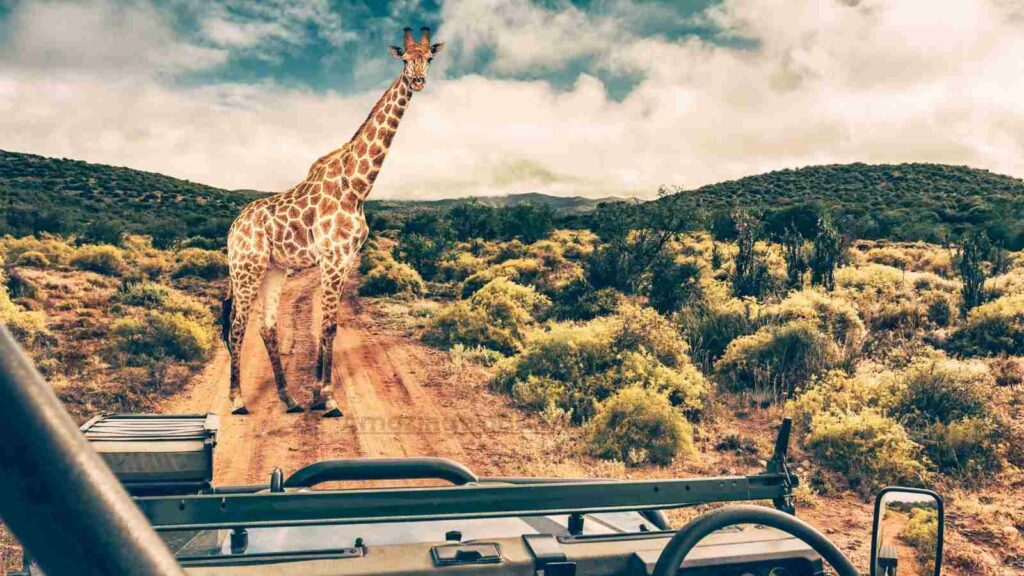
Interactions with wildlife and immersion in nature are integral to the glamping experience, but they require respect and caution to ensure both your safety and the well-being of the local environment:
Wildlife Awareness:
- Learn about the local wildlife and potential encounters you might have in the glamping area. This knowledge will help you understand their behavior and reduce the risk of unwanted interactions.
- Maintain a Safe Distance: Always keep a safe distance from wildlife. Avoid approaching or attempting to feed wild animals, as this can lead to aggressive behavior. Use binoculars or a camera with a telephoto lens to observe wildlife from a safe distance.
Food Storage:
- Properly store food to prevent attracting wildlife to your glamping site. Use sealed containers or bear-proof storage, if necessary, to keep food secure.
- Dispose of Food Scraps Properly: Clean up food scraps and trash promptly. Store them in designated containers or take them with you when leaving the site.
By practicing wildlife awareness and responsible food storage, you can enjoy the beauty of nature without compromising safety or disturbing the local wildlife.
Weather Preparedness
Weather conditions can be unpredictable, so it’s essential to be prepared for a range of situations:
Appropriate Clothing and Gear:
- Pack clothing and gear that are suitable for the expected weather conditions. Layering is often the best approach, allowing you to adjust to changing temperatures throughout the day.
- Consider Rain Gear: If there’s a chance of rain, bring waterproof clothing, including a rain jacket and pants, to stay dry and comfortable.
Weather Monitoring:
- Stay informed about the weather forecast for your glamping location. Access up-to-date information through weather apps, websites, or local sources.
- Plan Activities Wisely: Based on the weather forecast, plan your activities accordingly. If severe weather is expected, consider postponing outdoor adventures or having indoor alternatives.
By being prepared for various weather conditions and staying informed about local weather forecasts, you can ensure your safety and enjoyment during your glamping experience.
First Aid and Emergency Preparedness
Being prepared for emergencies is a fundamental safety measure during your glamping adventure:
First Aid Kit:
- It’s crucial to carry a well-equipped first aid kit that includes essential medical supplies. Common items in a first aid kit include adhesive bandages, antiseptic wipes, sterile gauze pads, adhesive tape, scissors, tweezers, pain relievers, and any personal medications.
- Familiarize yourself with the contents of your first aid kit and how to use them. Having the right supplies and knowing how to administer basic first aid can make a significant difference in case of injuries or medical issues.
Emergency Plan:
- Create an emergency plan with your fellow glampers before starting your trip. This plan should outline roles and responsibilities in case of an emergency, such as who will call for help, who will administer first aid, and who will assist with evacuations.
- Establish clear communication methods within your group. Make sure everyone knows how to reach each other in case you get separated and have designated meeting points.
- Identify nearby medical facilities, emergency contact numbers, and the closest emergency services. Having this information readily available can be invaluable in a crisis.
Communication Devices:
- Bring reliable communication devices, such as cell phones or two-way radios, and ensure they are charged or have backup power sources like portable chargers. These devices can be a lifeline in case of emergencies or if you need to contact outside help.
By having a well-equipped first aid kit, an established emergency plan, and reliable communication devices, you’ll be well-prepared to handle unforeseen situations and ensure the safety of yourself and your fellow glampers.
Hygiene and Sanitation
Maintaining cleanliness and hygiene is not only essential for your well-being but also contributes to a safer and more pleasant glamping experience:
Cleanliness:
- Keep your glamping site clean and organized. Clutter and disorganization can lead to accidents and injuries. Ensure that pathways are clear, and personal items are properly stowed.
- Regularly clean cooking and eating utensils to prevent foodborne illnesses. Maintain a clean food preparation area to avoid cross-contamination.
Waste Disposal:
- Follow proper waste disposal practices. Dispose of trash and waste in designated receptacles provided by the glamping site or adhere to Leave No Trace principles by packing out your trash.
- If you’re using disposable products, such as paper towels or wipes, dispose of them properly to prevent littering and the attraction of pests.
Eco-Friendly Products:
- Consider using eco-friendly toiletries and cleaning products to minimize your environmental impact. Biodegradable soaps and shampoos are a great choice, as they won’t harm the environment when you use them in outdoor settings.
- Use eco-friendly cleaning methods and avoid harmful chemicals that can harm local ecosystems.
By maintaining good hygiene and sanitation practices, you not only ensure your own well-being but also contribute to the preservation of the natural environment and the overall safety of your glamping site.
Respect for Local Culture and Regulations
Respecting local culture and adhering to regulations is essential when visiting new places:
Local Regulations:
- Familiarize yourself with local rules and regulations that may apply to your glamping location. These may include camping permits, restrictions on campfires, and specific guidelines for waste disposal.
- Comply with these regulations to protect the environment and avoid potential fines or penalties.
Cultural Sensitivity:
- Show respect for the local culture and traditions of the area you’re visiting. Be mindful of noise levels, cultural norms, and local customs.
- Engage with the local community in a respectful and considerate manner. Learning about and appreciating the local culture can enhance your glamping experience and promote positive interactions.
By respecting local culture and adhering to regulations, you not only ensure your safety but also contribute to the preservation of the environment and maintain a positive relationship with the local community. It’s an essential aspect of responsible and enjoyable glamping.
Conclusion
Glamping offers a unique blend of luxury and nature, but safety should always be a priority. By choosing a safe location, ensuring accommodation safety, practicing responsible campfire and cooking habits, respecting wildlife, preparing for various weather conditions, and being well-equipped for emergencies, you can enjoy your glamping experience to the fullest. Remember, a secure adventure leads to unforgettable memories.
How much did you like Our detailed Ultimate Glamping Activities: 12 Best Unforgettable Experiences in Nature? Review Also, please share these Blogs with your friends on social media.
Related Article –
- Road Trip With Kids
- Cinematic Travel Videography
- Sunset Photography
- Vintage Travel Photography
- Camping vs Glamping
- Luxury Glamping 101

Meet David Hoper, a passionate travel Blog writer with 7+ years of experience in travel content. Through his exemplary storytelling and engaging narratives, he shares his experiences and brings destinations to life. With a keen eye for detail and a love for exploration, he has cultivated a diverse portfolio of travel blogs that inspire and inform readers worldwide.
